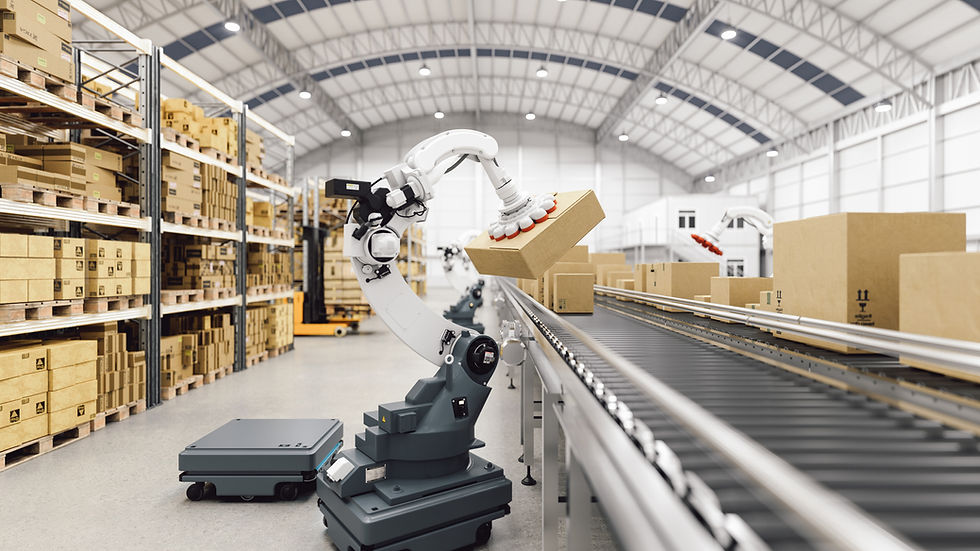Why Automation Still Matters in a Tariff-Driven Supply Chain
- John Stikes

- Apr 7
- 3 min read

As global tariffs continue to reshape trade dynamics, more companies are moving production and distribution back to the U.S. to avoid rising international costs. While this shift toward reshoring offers greater control and predictability, it also introduces a new set of challenges: labor constraints, increasing operating costs, and the need to rapidly adapt operations. Automation has never been more important.
At Approach Automation, we help small and midsized businesses tackle these challenges head-on with flexible, scalable automation that aligns with their operations and evolves with their business.
The Tariff Challenge Is Changing the Game
Tariffs are pushing companies to rethink their supply chains—and fast. But bringing production back to the U.S. isn’t as simple as flipping a switch. You now need to:
Compete for limited labor in tight job markets.
Rebuild or retrofit domestic facilities.
Stay nimble in the face of changing customer needs and product variations.
Automation is no longer a luxury—it’s a survival strategy.
Speed of Change Requires Smarter Systems
Today’s businesses need to move quickly. Whether you’re launching a new product line or scaling fulfillment to meet demand, automation provides the adaptability you need:
Scale capacity up or down without hiring waves of labor.
Pivot production lines without rebuilding infrastructure.
Maintain operational speed even in lean labor environments.
Automation empowers agility—critical when navigating uncertain supply chain and trade environments.
CapEx + OpEx: Know Your Investment Strategy
Smart automation strategies balance capital expenses (CapEx) with operating expenses (OpEx). Some solutions—like robotic arms or AS/RS systems—require upfront investment. Others, like robotic sweepers or robots-as-a-service, are available as ongoing subscriptions or usage-based models.
Evaluating automation as a blend of CapEx and OpEx allows you to:
Reduce large upfront commitments with flexible models.
Align automation spending with production volumes.
Understand true total cost of ownership and ROI.
We work with clients to help them understand both sides of the cost equation—so they can build for the long term while staying flexible today.
Automation Can Cost Less Than Your Current Labor
The average warehouse employee costs over $53,000 per year. Many automation systems—such as mobile robots or autonomous sweepers—can operate 24/7 for less than that, and they don’t need breaks, benefits, or overtime.
The real power? You can reassign your workforce to revenue-generating tasks, such as customer fulfillment, value-added services, or continuous improvement initiatives. It’s not about replacing people—it’s about optimizing how you use them.
Partnering for Smart Progress
Trying to automate without a partner is like trying to rebuild your engine while the car is moving. At Approach Automation, we specialize in helping companies:
Identify high-ROI opportunities in their existing operations.
Design flexible solutions that align with business goals.
Build scalable systems that adapt to future needs.
We’re not here to sell cookie-cutter tech. We’re here to help you make automation work—at your pace, with your people, for your future.
Automate Smarter—Not Just Faster
In a world where tariffs, labor shortages, and unpredictable demand are becoming the norm, automation is how you stay ahead. Whether you’re just starting your journey or ready to take the next step, Approach Automation is your partner in building smarter, faster, and more resilient operations.
Let’s talk. We’ll help you navigate change—and turn automation into a competitive advantage.


